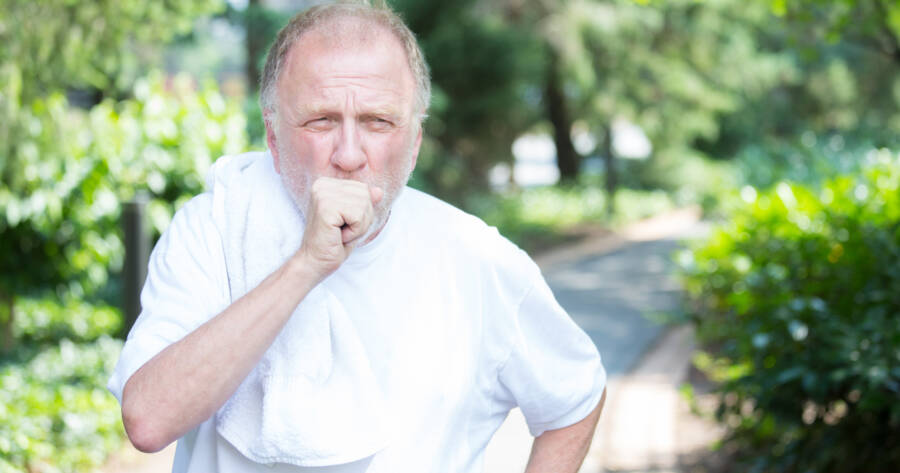If you or someone you love is experiencing unexplained respiratory symptoms or facing a diagnosis, you can learn more about chronic obstructive pulmonary disease (COPD) with an online search right now, before speaking with your doctor.
COPD is a chronic inflammatory lung disease that affects millions of people – mostly over the age of 40 – worldwide. Its main characteristic is increasing breathlessness, which can make simple daily tasks difficult to complete.
COPD Stages
The Global Initiative for Chronic Obstructive Lung Disease (GOLD) system is used to classify the stages of COPD, characterize the severity and, in the past, help formulate treatment plans and determine prognoses for the disease.
The stages of COPD are defined by measuring how much air you can exhale from your lungs in one second. The measurement received from this test is known as the forced expiratory volume (FEV1). You can learn more about what to expect during this test with some online research.
Stage I
Stage I COPD is defined by an FEV1 greater than or equal to 80 percent, which is considered mild obstruction. At this stage, you may not have any symptoms, or at least not any symptoms that grab your attention. Despite that, there are a couple of signs that may be present, including:
- Cough: The cough can be intermittent to chronic. It can be dry or produce mucus that is clear, white, yellow, or green.
- Shortness of Breath: Also known as dyspnea. In this stage, this symptom is not necessarily evident or with minimal activity.
Stage II
Stage II COPD is defined by an FEV1 between 50 and 80 percent. It is characterized by moderate obstruction. At this stage, you are likely to notice the following symptoms:
- Cough: You will probably notice a chronic cough — often referred to as a “smoker’s cough” — with an increase in mucus.
- Shortness of Breath: You will probably notice this symptom with lower levels of activity, even household chores may become challenging.
- Wheezing: This symptom will most likely be intermittent at this stage, especially when you exercise.
- Fatigue: This symptom is minor at this stage, as your oxygen carrying capacity is being minimally affected.
Stage III
Stage III COPD is defined by an FEV1 between 30 and 49 percent and is characterized as severe obstruction. All of the aforementioned symptoms will have increased. In addition, the following new symptoms may appear:
- Tightness of the chest
- Insomnia
- Shortness of breath at rest
- Frequent flares ups
Stage IV
Stage IV COPD is defined by an FEV1 less than 30 percent and is characterized by very severe obstruction. This stage is often referred to as “end-stage” COPD. Notable signs and symptoms include:
- Cyanosis: Characterized by a blue or gray discoloration of the lips and tips of the fingers and toes due to a severe lack of oxygen in the distal extremities.
- Morning Headaches: This symptom is also a consequence of a lack of oxygen in the blood.
- Swelling in the Hands, Legs, and Feet: Most likely a consequence of declining heart function, which is secondary to the increased stress of pumping blood through the damaged lungs.
End-Stage COPD
End-stage COPD, also known as Stage IV COPD, deserves special mention as it is a stressful time not only for the body but also for the mind. Many with Stage IV of the disease equate it with imminent death or a period of grave disability before death, which is not always the case. Palliative care becomes a huge part of living with end-stage COPD.
At this stage, everyday activities become very challenging mostly due to breathlessness. Patients are more at risk of:
- Respiratory infections
- Heart problems
- Depression and anxiety
COPD Treatments
Currently, there is no known cure for COPD. The goals of COPD treatment include controlling symptoms, decreasing the risk of complications and exacerbations, and improving quality of life.
Quitting smoking is the foundation of any COPD treatment plan. Nicotine replacement is a good place to start and is available in the following forms: patches, gums, lozenges, nasal sprays, and inhalers. There are also oral medications that are used for smoking cessation, which you can learn more about with an online search.
Medications
The following classes of medication are used to treat COPD:
- Short-acting and long-acting bronchodilators
- Inhaled steroids
- Combination inhalers
- Oral steroids
- Phosphodiesterase-4 inhibitors
Research these options more online and speak to your doctor if you have questions about whether one might be right for you.
Lung Therapies
Supplemental oxygen therapy and pulmonary rehabilitation are helpful for those with moderate to very severe COPD. Oxygen therapy has the potential to improve quality of life and is the only therapy for COPD that has been shown to increase survival.
On the other hand, pulmonary rehabilitation may decrease hospitalizations, increase participation in everyday activities, and improve quality of life for COPD patients.
Start a Search
People can live with COPD for many years, but early diagnosis and treatment are key. Spend some time researching this disease more online to familiarize yourself with the early warning signs. Knowledge, and having an awareness of how your body feels when healthy, can play a huge part in early intervention.
